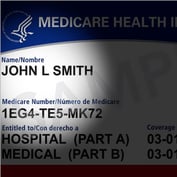Putting what health insurance agents and brokers do, and have always done, on official government paper can make even a relatively simple, clear-cut process look more complicated.
The managers of the public health insurance exchanges operated by the U.S. Department of Health and Human Services (HHS) have demonstrated that point in a new bulletin that details how 2015 reenrollment will work at HHS-run exchanges.
The bulletin comes from the Center for Consumer Information and Insurance Oversight (CCIIO).
The Centers for Medicare & Medicaid Services (CMS) manages the HHS-run exchanges.
CCIIO is the division of CMS that actually gets down in the exchange trenches and tries to make the HHS exchanges — including the HealthCare.gov exchange enrollment system, and the HHS exchanges’ call centers — work.
In the new bulletin, CCIIO officials talk about passive reenrollment — efforts by consumers to do nothing and keep the same HHS exchange coverage in place — and active enrollment, or mandatory or voluntary efforts by consumers to change coverage.
Some sections in the bulletin deal with how the HHS-run exchanges will handle a National Producer Number (NPN), and how an NPN system that was associated with an HHS exchange enrollee in 2014 should stay in the enrollee’s enrollment file until the enrollee takes active steps to remove it.
A much longer section deals with lists of 20 scenarios, or situations that could crop up during the 2015 coverage enrollment period.








 December 02, 2014 at 12:45 PM
December 02, 2014 at 12:45 PM















